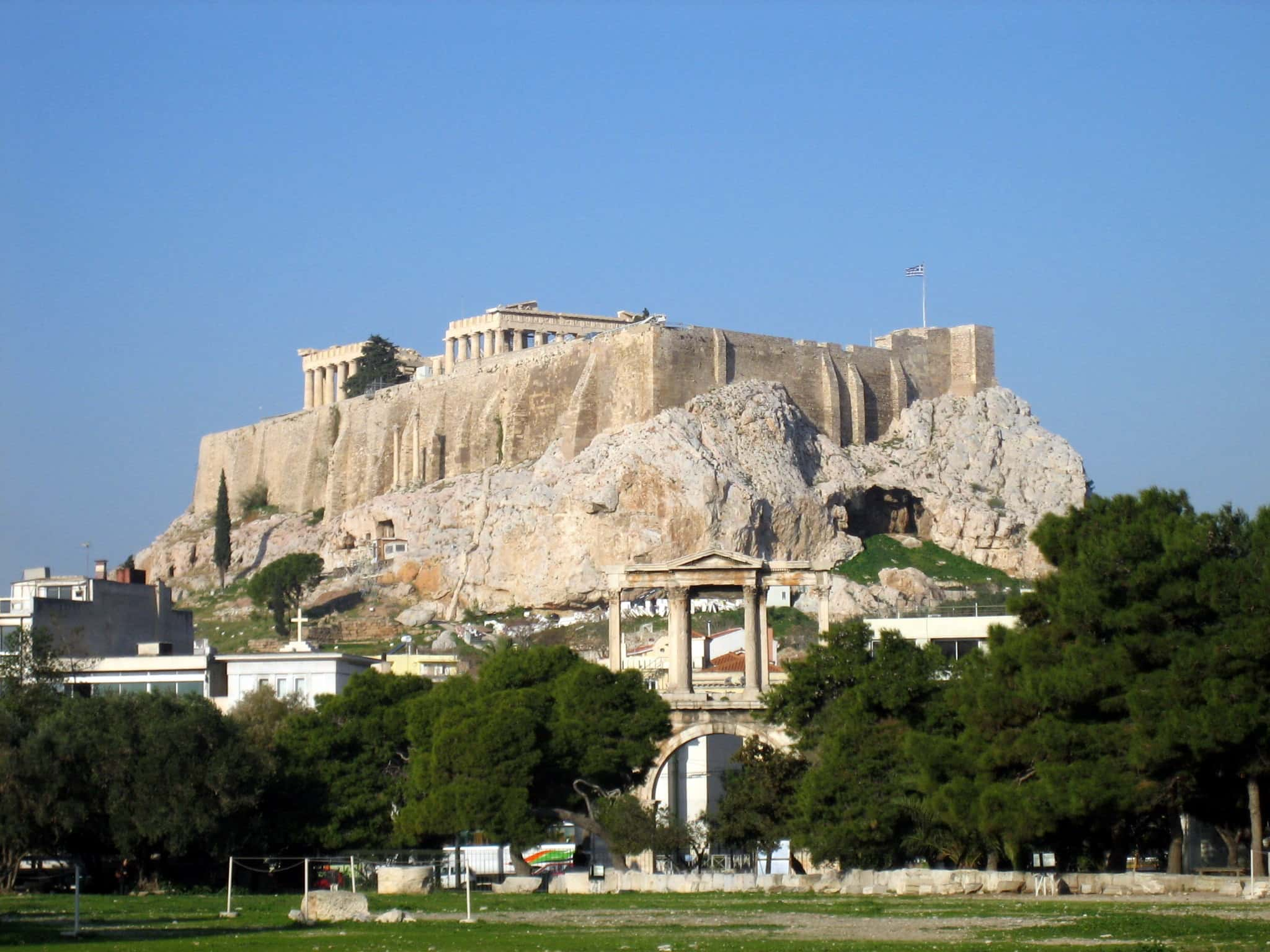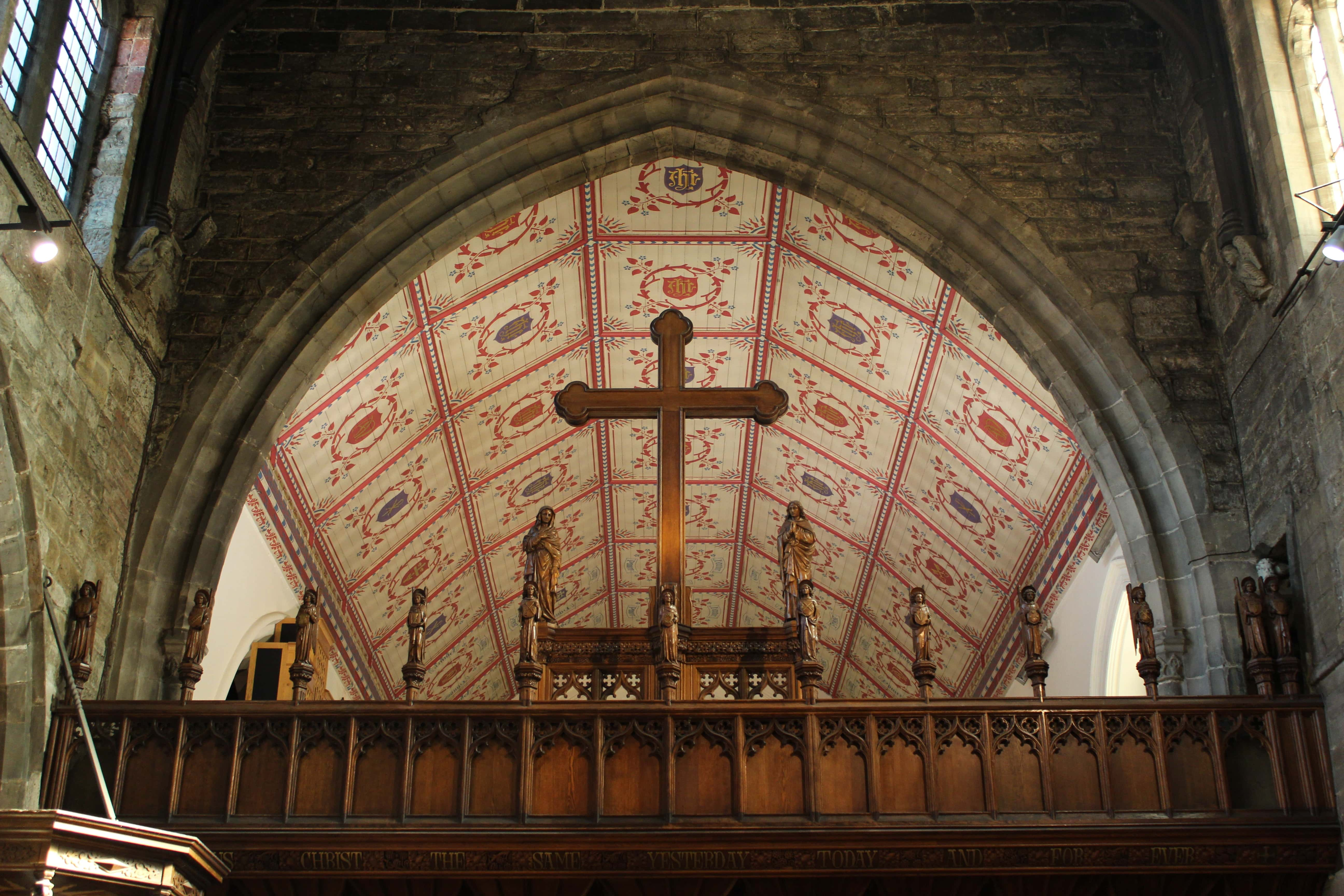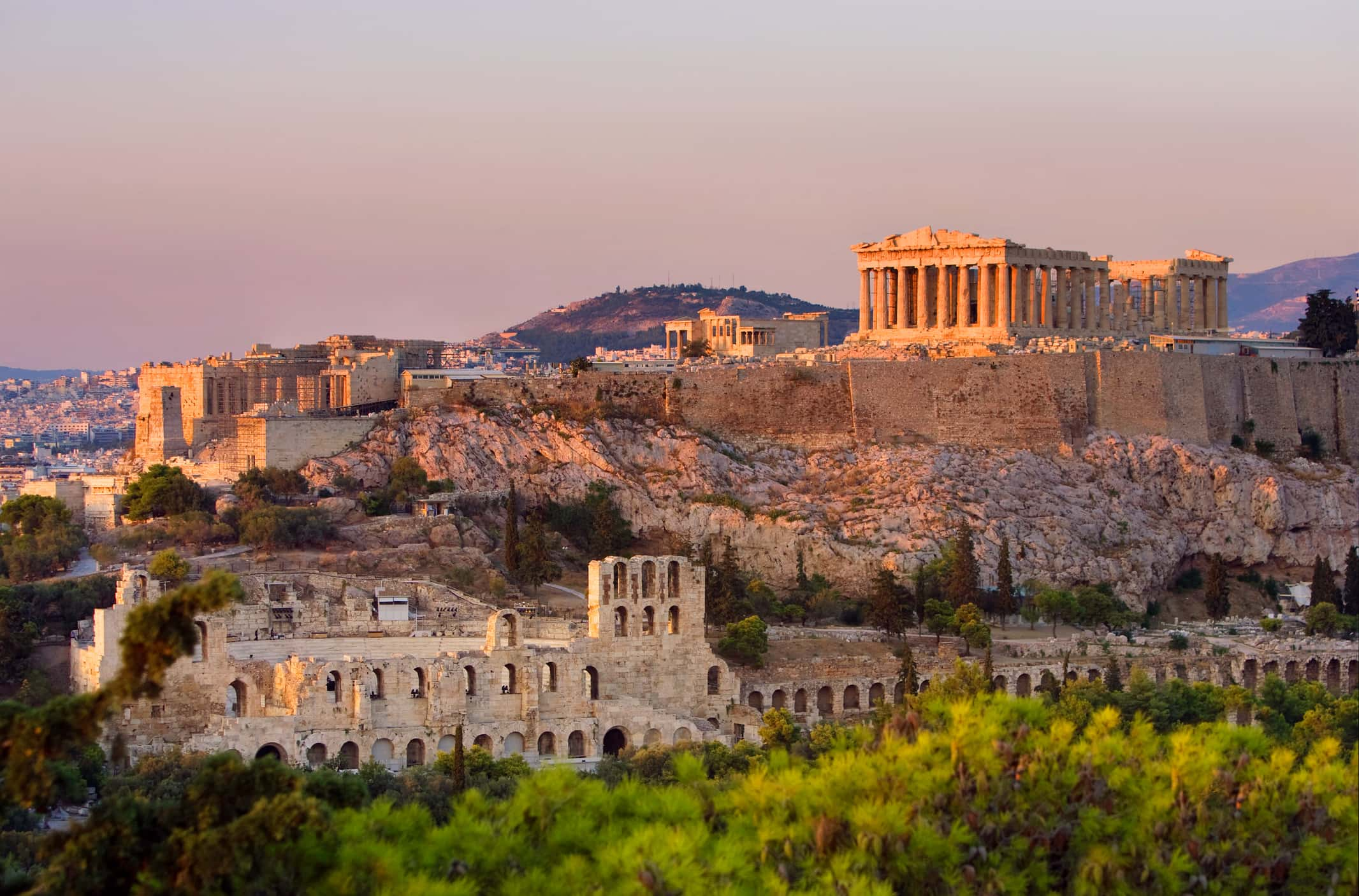The Complicated History Of Greece’s Parthenon
The Parthenon was built about 2,500 years ago on a rocky hill overlooking Athens. The building has a staggering and complicated history. Constructed with incredible engineering and architectural precision from 100,000 tons of locally quarried marble, it was originally a temple for the goddess Athena.
However, it also housed a treasury that held over a ton of gold—melded onto a 11.5-meter (38-foot) statue.

The Many Lives Of The Parthenon
Over time, the Parthenon became a Christian church, a Muslim mosque, an ammunition depot, and a majestic ruin. It was ravaged by fire, a massive explosion, and a British lord. Through it all, the Parthenon has stood resolutely as a symbol of Greece and modern democracy.
The Beginning: The Pre-Parthenon
Although the exact date can’t be pinpointed, around 490 BCE, ancient Athenians began constructing a building to house a massive statue, the Athena Parthenos. This building—which is referred to as the pre-Parthenon—was established on the Acropolis of Athens.
Acropolis Of Athens
The Acropolis of Athens is an ancient citadel (i.e., a highly fortified area). It’s built on a rocky hill overlooking Athens, which is itself situated in a large basin.

Structures On The Acropolis
There are several structures and buildings on the Acropolis of Athens, creating a complex of Greek temples. The most important are the Parthenon, the Propylaea, the Erechtheion, and the Temple of Athena Nike.
The Parthenon visually dominated the Acropolis because of its massive size, as well as its incredible architecture and rich decoration.
The Acropolis Of Athens Was Built To Honor Athena
All of the structures on the Acropolis were built to honor Athena, the Greek goddess of war, wisdom, and handicrafts. She was also the patroness and protector of the city Athens itself.
Greco-Persian Wars Coincided With Building The Parthenon
Right around the time that Darius the Great coordinated the first Persian invasion of Greece (492-90 BCE), the Athenians started building the pre-Parthenon (490 BCE). Construction continued as Darius’ son, Xerxes I of Persia, orchestrated the second Persian invasion of Greece.
 Gruppe 5, Alexander the Great (2014)
Gruppe 5, Alexander the Great (2014)
Darius The Great Had A Vendetta
Darius particularly wanted to destroy Athens and Eretria. The two city-states had supported Ionia—a region of 12 cities on the western coast of modern-day Turkey—in its rebellion against Persian rule in the 490s.
The Battle Of Marathon
The Persians did have some early successes during their first invasion of Greece. But when they reached Marathon, they were soundly defeated and humiliated by the Athenian army (which had some support from the Plataeans).
Although they were significantly outnumbered, the Athenians and Plataeans managed to rout the Persians in a single afternoon.

History's most fascinating stories and darkest secrets, delivered to your inbox daily.
Xerxes Succeeded Darius
The Persians retreated following the Battle of Marathon, but Darius remained determined to conquer all of Greece. He spent the next three years preparing a massive campaign. However, he died in 486 before he could lead the Persians into battle once again.
His son Xerxes ascended the throne and took over the military preparations.
The Persians Sacked Athens
In 480 BCE, Xerxes returned to Greece with a massive army and navy. This time, the Persians crushed the Athenians, torching the city of Athens and razing the Acropolis, including the pre-Parthenon, which was still under construction.
The Greeks Were Victorious At The Battle Of Plataea
Although Athens was left in ruins, the Greeks had significant victories against the Persians at Salamis in 480 and Plataea in 479. Following the Battle of Plataea, the Persians retreated, ending the second invasion.
The Pre-Parthenon Was Left in Ruins for 30 Years
The pre-Parthenon was left in ruins for more than 30 years—although it continued to be used as a temple. During the second Persian invasion, the Athenians had vowed not to rebuild any destroyed sanctuaries, but instead left them untouched as reminders of the Persian barbarism.
The Delian League
As Athens and Greece recovered from their battles with the Persians, several dozen Greek city-states formed a confederacy known as the Delian League. The purpose of the league was to continue fighting against the Persian Empire. It wasn’t long before Athens began to dominate the league.
A Plan To Rebuild Athens And The Acropolis
In 454 BCE, the Delian treasury was moved to Athens—specifically to the Acropolis—and the money in the treasury was earmarked for rebuilding Athens, including its destroyed temples. Pericles, the powerful Greek statesman, orator, and general, spearheaded the rebuilding plan.
Constructing The New Parthenon
Construction started on the “new” Parthenon in 447 BCE. It was built over the ruins of the pre-Parthenon.
An Architectural Marvel
The Parthenon is an architectural marvel. At the time it was constructed, it was the largest and most lavish temple built on the Greek mainland. It is massive, with approximate measurements of 69.5 meters (228 feet) long, 30.9 meters (101 feet) wide, and 13.7 meters (45 feet) tall.
The Doric Columns Are Massive
The rectangular building was completely surrounded on its exterior by 46 Doric columns, each measuring 1.9 meters (6.2 feet) in diameter and 10.4 meters (34 feet) in height. There are also 23 inner columns.
It Has Only Three Rooms
Despite its massive size, the Parthenon was designed with a simple floor plan. Divided into three main parts, the building has an outer portico (pronaos), a sanctuary (sekos or cella), and a rear porch (opisthonaos).
 Io Herodotus, Wikimedia Commons
Io Herodotus, Wikimedia Commons
The Parthenon’s Cella
The main room of the Parthenon—the cella—is divided into two unequal spaces. The larger section, called the eastern chamber, housed the statue of Athena. The smaller section on the west side of the building, called the opisthodomos, was used as a treasury. The opisthodomos was accessed through the rear (western) porch.
It Was Built With 100,000 Tons of Marble
About 100,000 tons of Pentelic marble was quarried from Mount Pentelikon, about 16 kilometers (10 miles) from Athens, to build the Parthenon. Wagons were used to transport the marble up to the Acropolis. Scholars speculate that workers used a system of pulleys, ropes, and wood cranes to maneuever the marble blocks.
Skilled Stonemasons Were In High Demand
Building the Parthenon was an enormous project and skilled stonemasons travelled from far away to assist. Specialized skills were needed to trim and carve the marble blocks. Everything was done by hand with meticulous precision, using iron tools such as picks, points, punches, chisels, and drills.
Slaves Were Paid Workers
In addition to stonemasons, carpenters, and metalworkers, unskilled laborers were employed in building the Parthenon. Regardless of their job role or whether they were Athenians, foreigners, or slaves, all workers were paid a similar wage. Architects weren’t paid significantly more than slaves. However, slaves likely had to turn over a proportion of their wages to their masters.
The Building Could Have Created Optical Illusions
The stark lines of the Parthenon’s heavy Doric style would have caused optical illusions if it had been built with straight lines and right angles. In that case, it would have appeared to sag in the center and the columns would have appeared to narrow in the middle when viewed with human eyes.
Amazingly, the ancient Greeks realized this and implemented some architectural refinements.
It Was Built With Virtually No Straight Lines
Amazingly, there are virtually no straight lines in the Parthenon’s construction. Instead, it’s built with delicate curves, which create an optical illusion that the building is constructed of straight lines and right angles. For example, each of the Partheon’s Doric columns swell very gently in the center, by approximately 4 centimeters (1.6 inches), and lean slightly inwards. The corner columns lean in diagonally.
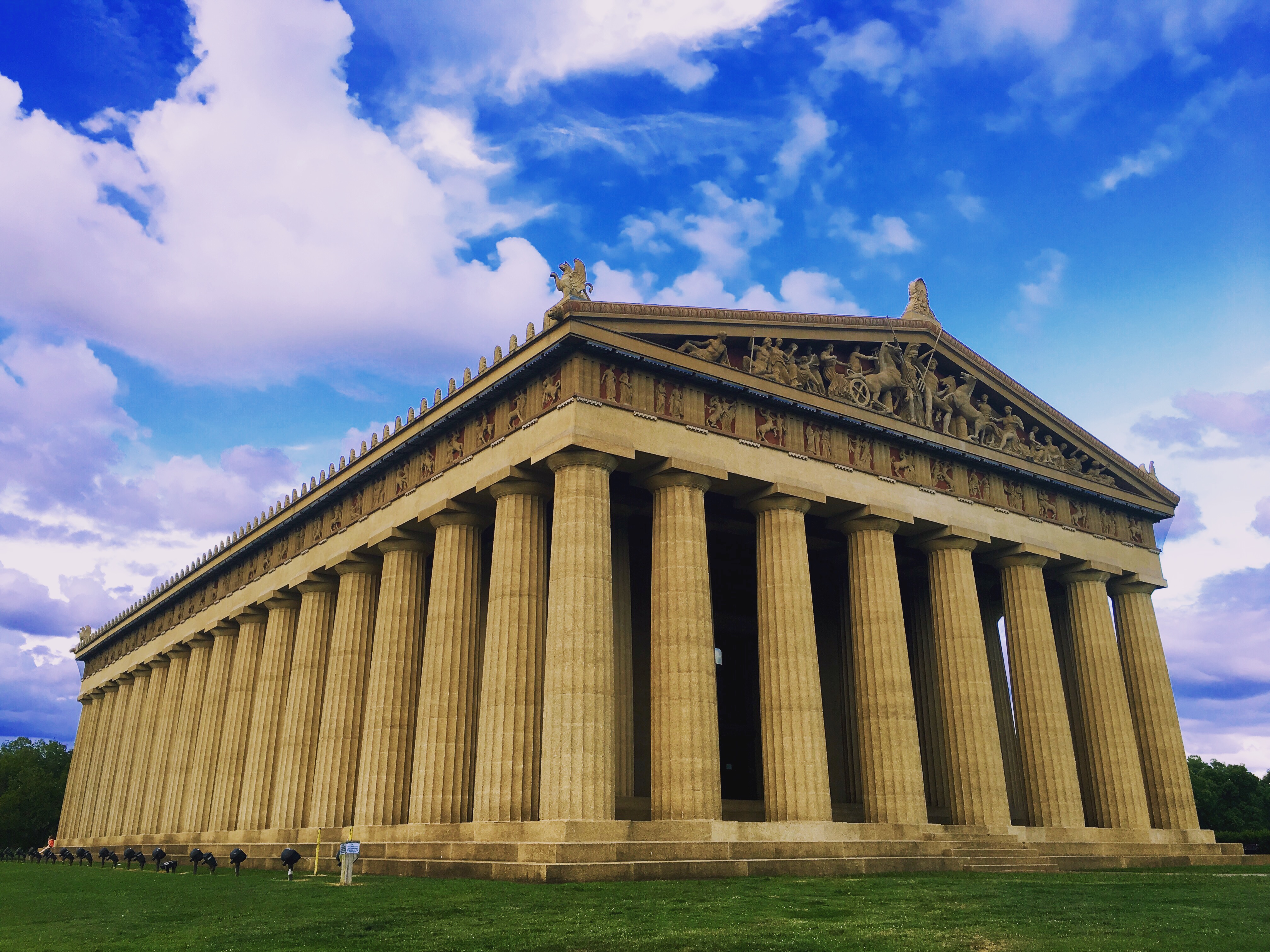 Mikin24seven, Wikimedia Commons
Mikin24seven, Wikimedia Commons
Its Floor Is Domed
The Parthenon’s stylobate (the foundation on which the columns rest) is slightly domed. This curvature not only contributes to the optical illusion that all lines of the Parthenon are rigidly straight but also helps to shed rainwater and reinforce the building against earthquakes.
The architrave and entablature on top of the columns curve downward, mimicking the curvature of the stylobate.
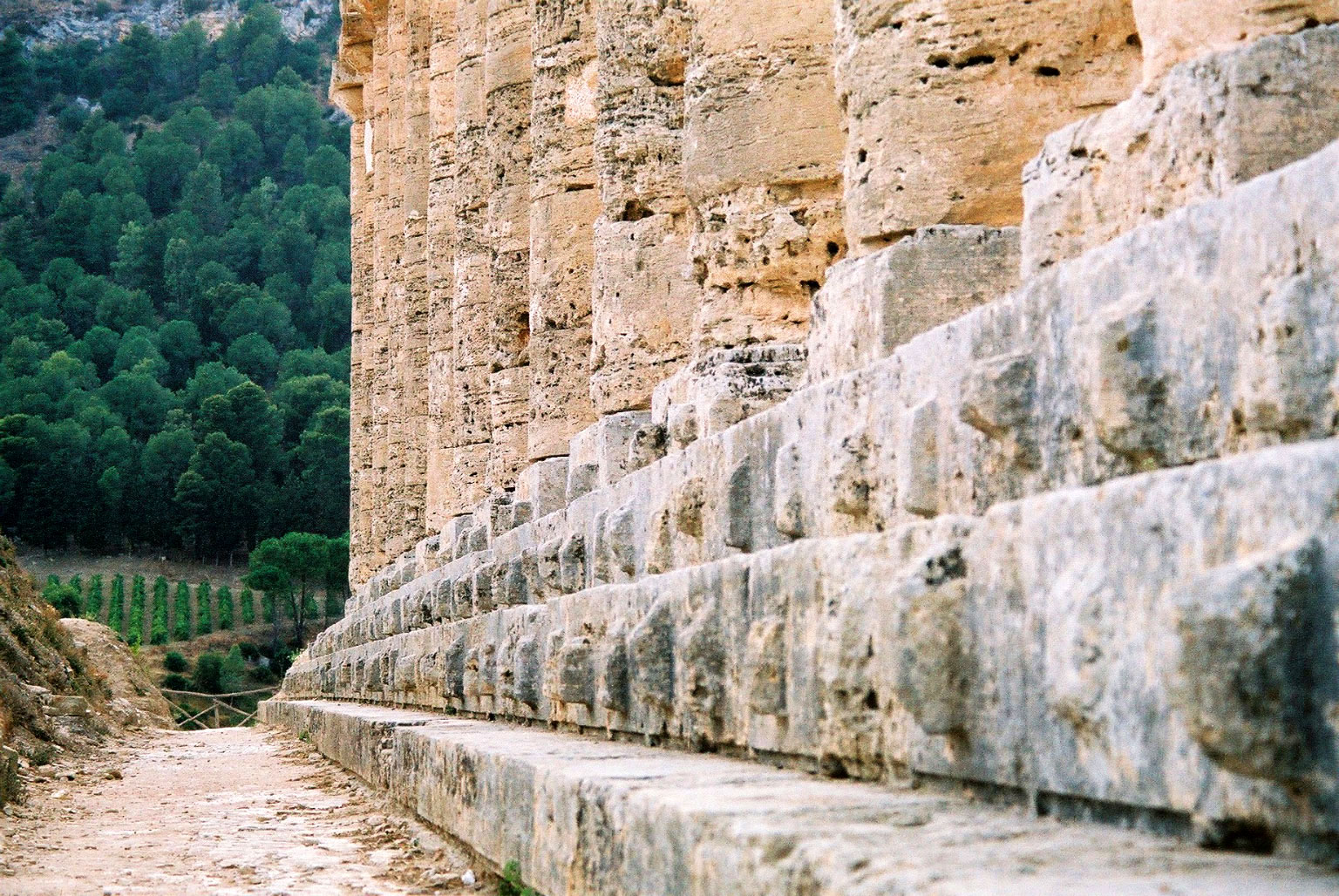
Each Piece Of Marble Is Uniquely Shaped
Each piece of marble within the Parthenon is uniquely sized and may vary from another similar piece by only a tenth of a millimeter. This fine engineering and stonemasonry demonstrates the incredible workmanship of the fifth-century BC builders, but makes 21st-century restoration efforts very difficult.

The Statue Of Athena Parthenos
It’s believed that construction on the Parthenon was completed in 438 BCE. Shortly afterwards, a stunning 38-foot gold and ivory statue of Athena Parthenos was installed in the eastern chamber of the cella.
The statue is now lost but it is described by ancient writers as portraying Athena as a triumphant warrior, holding a 1.8-meter (6-foot) figure of Nike, the goddess of victory, in her right hand.
The Statue Was A Literal Gold Mine
Athena Parthenos was more than a sculpture. It was a financial reserve. The gold used to decorate the statue weighed between 1 and 1.3 tons. That amount of gold would have paid the salary for 10,000 skilled Athenian workers for a full year. If needed, the gold could have been removed and melted down for coinage.
The Parthenon’s Artwork
Although construction on the Parthenon was completed and Athena Parthenos was installed around 438 BCE, work continued on the building’s artwork for about six more years. Brightly colored decorative stonework, sculptures, and reliefs adorned the cella.
Ninety-two carved marble metopes (plaques) were set between triglyphs in the exterior frieze. The pediments on the east and west facades had about 50 individual marble sculptures.
The Artwork Was A Visual Narrative
The artwork adorning the Parthenon was carefully crafted to provide a visual narrative of Greek mythology and the founding of Athens. It also celebrated democracy and the Greek victory over the Persians.
 Gary Todd from Xinzheng, China, CC0, Wikimedia Commons
Gary Todd from Xinzheng, China, CC0, Wikimedia Commons
It Sustained Significant Fire Damage
The Parthenon remained intact and used as a temple for centuries. However, in the middle of the third century CE, the building sustained major damage following a fire that destroyed the roof and much of the interior.
The Statue Of Athena Parthenos Was Lost To History
During the third-century fire, the statue of Athena Parthenos was damaged, though later repaired. The statue may have been transported to Constantinople around this time. However, it has been lost to history and there is no record of its ultimate fate.
It Underwent Hodgepodge Repairs
Hodgepodge repairs were undertaken in the fourth century CE to address the fire damage that the Parthenon had sustained decades earlier. A new wooden roof, topped with clay tiles, was installed. However, the roof was imperfect, leaving the building’s wings exposed.
It Was Converted Into A Christian Church
In the sixth century CE, the Byzantine Empire, which was Christian, conquered Athens and outlawed pagan worship. Several alterations were made to the Parthenon to turn it into a Christian church.
It remained a place of Christian worship for about 900 years.
It Was Also Converted Into A Mosque
After laying siege to Athens for two years, Ottoman Turkish forces seized the city in 1458. The immediate impact on the Parthenon is unclear. The Turks may have left the Parthenon functioning as a Greek Orthodox church for an indeterminate amount of time.
But, at some point before the end of the 15th century, it was converted into a mosque. It’s possible that the conversion was done to punish Athenians for plotting against Ottoman rule.
It Sustained A Massive Explosion
During the Morean War (1683-99), Athens came under threat from the Venetians in 1687. To prepare for a possible attack, the Ottomans converted the Parthenon into an ammunition depot and shelter, which was a huge mistake. When the Venetians arrived and launched their offensive, one of their mortar shells hit the Parthenon, causing a massive explosion.
Three hundred people died, and the roof and most of the walls of the Parthenon were destroyed.
The Elgin Marbles In Britain
In the earliest years of the 1800s, Britain’s Thomas Bruce, 7th Earl of Elgin, removed about half of the Parthenon’s remaining sculptures and transported them to Britain. Elgin intended to display the pieces in a private museum but ultimately sold them to the British Museum.
These sculptures have since become known as the “Elgin Marbles”.
 Dominic's pics, Flickr, Wikimedia Commons
Dominic's pics, Flickr, Wikimedia Commons
The Controversy Of The Elgin Marbles
The Elgin Marbles have been controversial since they first arrived in Britain. Many, including the poet Lord Byron, considered removing the Marbles to be vandalism or looting.
It remains unclear whether official permission had been granted to remove the sculptures.
 National Library of Wales, Wikimedia Commons
National Library of Wales, Wikimedia Commons
Greece Asked For The Return Of The Marbles
Greece first asked for the return of the Elgin Marbles after it gained independence from the Ottoman Empire in 1832. Greece is still asking for their return.
Restoration Of The Parthenon
The imposing ruins of the Parthenon overlooking Athens remain an enduring symbol of Greece and democracy. Large-scale restoration projects have been ongoing at a painstaking pace since the 1970s, as experts strive to preserve the integrity of one of the world’s best-recognized buildings.




